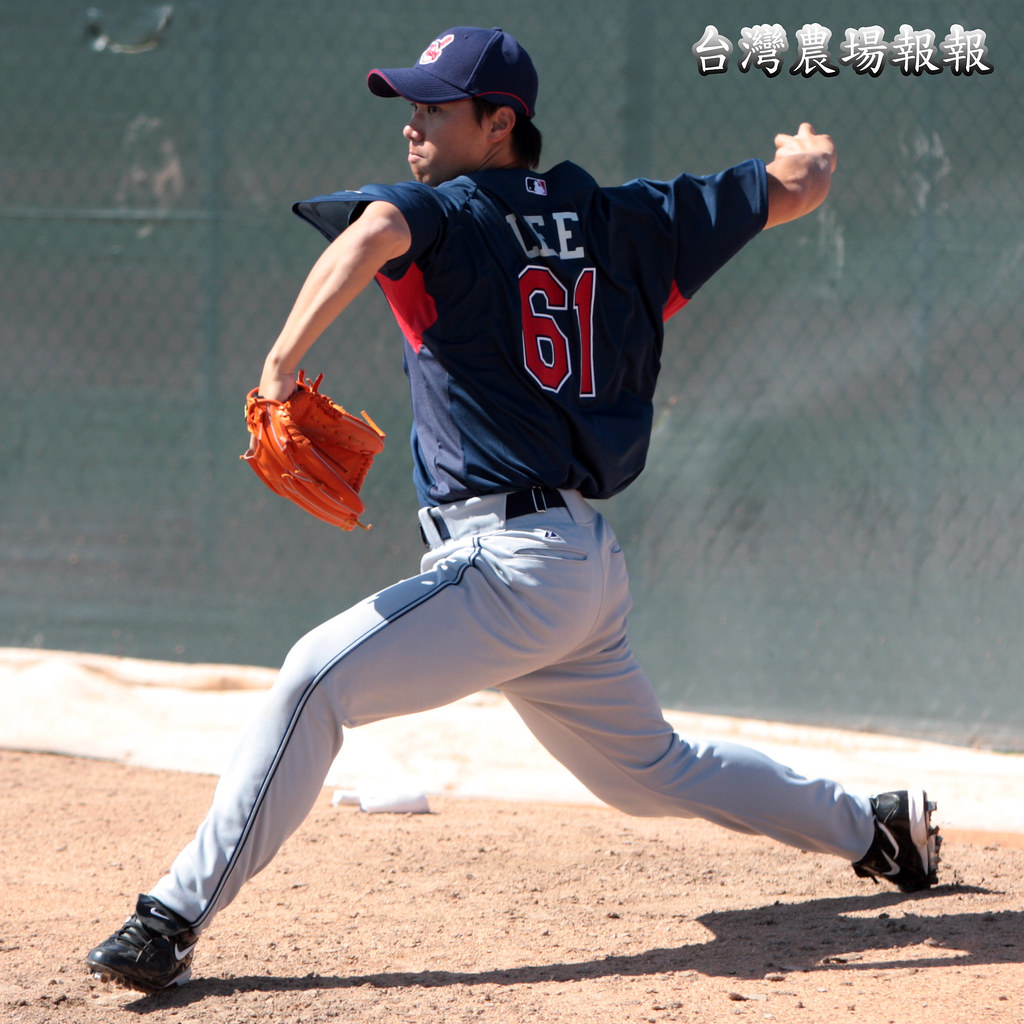 Level of competition
Level of competitionIt's important not to evaluate the statistics of a pitching prospects in a vacuum. Who the pitcher is pitching against is important to gain some context for his statistics. For example, a 22 year old pitcher out of college has a good deal of experience against sound hitters. Place him on a low-A team against high school aged players who have probably never seen a good breaking ball or even thought about game theory and you would expect the pitcher to dominate. Conversely, if a young pitcher is getting rocked and a high level that is not always cause for alarm since he might be in over his head. Chen-Chang Lee and Chia-Jen Lo both came to the states with college and international experience and, as expected, did very well when they started in high-A.
Injuries
Injury history is one of the crucial aspects in evaluating the future of a pitcher. In general, there are two types of arm injuries, shoulder and elbow. Shoulder injuries decrease a pitcher's velocity and often require long rehab sessions in order to heal the joints. Surgery on shoulders is very serious as their success rate is still rather low. Chien-Ming Wang had a successful shoulder surgery in the minors, however that is more the exception than the rule as evidenced by his current inability to come back from shoulder surgery. Many pitchers who suffer serious shoulder injuries never regain their previous form and are soon out of baseball.
Elbow injuries are somewhat less severe due to the high success rate of the Tommy John procedure. Often, when a pitcher incurs a elbow injury it's the result of a ligament being strained or snapped. The Tommy John procedure takes a tendon from another part of the body (like the leg) and replaces the defective one. Recovery times are on the order of 12-18 months with a ~90% success rate. Recovering pitchers often have control problems after the procedure since the elbow is crucial to controlling pitches. After some time, however, many pitchers regain their former control. In addition, some pitchers have reported an increase in velocity after the procedure. However, this is not due to the new ligament but rather the intensive rehab process after the surgery which often refines and corrects problems in the pitcher's pitching motion. Hong-Chih Kuo has already undergone 2 Tommy John procedures and continues to pitch well today, although his is still at constant injury risk.
Pitchers incur injuries most often before age 25 since their joints are often still growing. Health is one of the key factors in becoming a successful pitcher. There have been numerous promising pitchers who have had their careers derailed by serious injuries, such as Chin-Hui Tsao. Thus, prospects with a long injury history should be viewed with caution since they are one step away from never pitching again. This is especially a problem with Taiwanese prospects who have often had their arms abused in tournaments. Major league teams have recognized this and often enforce a long period of rest after their initial signing to heal their arms.
Major leagues teams also reduce the risk of pitching injuries by signing more college players than high school players. College players have put on an additional 3-4 years on their arm and thus have more of a track record. If their arms broke down before they were signed that's one less pitcher a major league team needs to worry about getting injured that they would have paid. High school pitchers have a smaller track record and thus the teams incur the risk of them breaking down while on their payroll. Teams will still sign high school pitchers, but they do so knowing that while their potential is often greater than a college player, they also have a greater risk of never realizing that potential.
Frame
A pitcher's height, weight, and bone structure are important to project the long term future of a pitcher. Tall, wide shouldered, wide waist pitchers like Chien-Ming Wang are the prototypical pitcher's frame. Their large frames allow the body to absorb much of the stress that otherwise would be placed on the arm. Tall pitchers also have a slight advantage in that their release points are somewhat closer to home plate than shorter pitchers. A one foot difference in height can correspond to an apparent 2-3 mph increase in velocity. Smaller pitchers, usually under 6 ft., have to utilize their arm and body more to generate the same velocity as larger pitchers. If we think back to Newton's second law that force is equal to mass times acceleration. Then to generate the same force (or velocity in this case) a shorter lighter pitcher needs to accelerate faster than a taller heavier pitcher. This places more stress on their arms and body making them more susceptible to injuries. This is one reason why you often see shorter pitchers in the bullpen since they do not have the same endurance as bigger pitchers.





沒有留言:
張貼留言